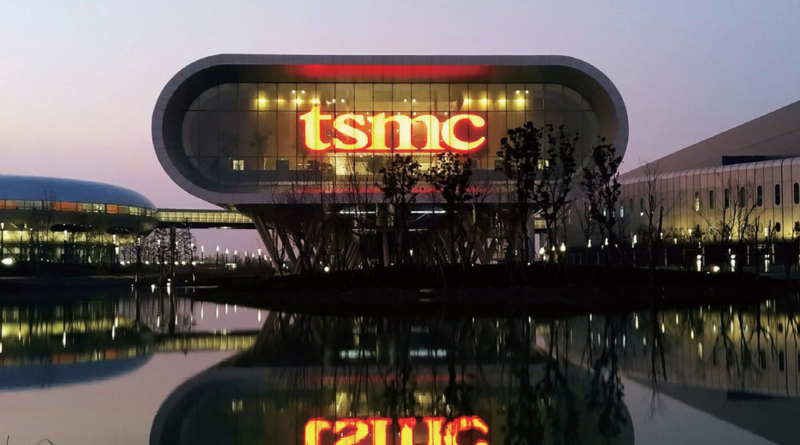Taiwan Semiconductor Will Receive a Huge U.S. Subsidy. Does That Make the Stock a Buy? – The Motley Fool
Founded in 1993, The Motley Fool is a financial services company dedicated to making the world smarter, happier, and richer. The Motley Fool reaches millions of people every month through our premium investing solutions, free guidance and market analysis on Fool.com, top-rated podcasts, and non-profit The Motley Fool Foundation.
Founded in 1993, The Motley Fool is a financial services company dedicated to making the world smarter, happier, and richer. The Motley Fool reaches millions of people every month through our premium investing solutions, free guidance and market analysis on Fool.com, top-rated podcasts, and non-profit The Motley Fool Foundation.
You’re reading a free article with opinions that may differ from The Motley Fool’s Premium Investing Services. Become a Motley Fool member today to get instant access to our top analyst recommendations, in-depth research, investing resources, and more. Learn More
It may surprise investors how much (or little) the new fabs will add to its production capacity.
The Biden administration announced this past Monday that Taiwan Semiconductor Manufacturing Company (TSM -1.25%) will receive a subsidy of up to $6.6 billion from the federal government to support the company’s planned $65 billion investment in building three cutting-edge chip fabrication plants in Arizona. While that sounds like a lot of money, the market’s reaction was tepid. The stock rose by just 1% in that day’s trading session.
That reaction may leave investors wondering whether this agreement makes TSMC stock a buy or whether it does little to change the stock’s value proposition. Let’s dive in and see.
The subsidy is a product of the U.S. CHIPS and Science Act, which among other things allocated $53 billion in federal funds to promote the construction of semiconductor fabs on U.S. soil.
Washington has been pushing to expand domestic chip production amid concerns that about two-thirds of third-party chip manufacturing takes place in Taiwan. Considering the threats by China to invade Taiwan and the recent earthquake on the island, anything that increases the share of the cutting-edge chip supply made domestically should improve the peace of mind of Western governments and TSMC’s customers. The sense of relief likely extends to TSMC for many of the same reasons, Previously, it had pledged to build two fabs in Arizona — this deal adds a third.
It’s hard not to see the subsidy as significant in some respects. With this infusion of cash, TSMC now plans to construct three fabs in the Phoenix area for a total cost of $65 billion. Also, the subsidy amounts to more than the $6.3 billion in income the company earned in 2023’s fourth quarter.
However, $6.6 billion is a small fraction of the $48 billion TSMC holds in cash and cash equivalents on its books. Moreover, TSMC produced approximately 16 million wafers in 2023, accounting for 61% of all third-party chip production, according to TrendForce.
The company said it would make around 600,000 wafers annually in Arizona when the plan was only two fabs. Assuming that the total output rises to around 900,000 per year with three fabs, it would amount to less than 6% of the company’s current production capacity, so the U.S. will likely continue to heavily depend on Taiwan as a source for advanced semiconductors.
Fortunately for shareholders, the geography of chip production has little effect on TSMC’s investment case. That case has become more compelling amid rising demand for AI-capable chips, which has almost certainly led to increases in orders from chip designers like Nvidia and AMD.
Admittedly, that growth was not well-reflected in last year’s financials for TSMC. In 2023, bottom-line income fell 22% to $27 billion. Still, the analysts’ consensus forecast is for a 22% increase in earnings this year and growth of an additional 23% in 2025.
With those predictions in mind, investors are not looking backward. Over the past year, the semiconductor stock has risen nearly 60%. And although its P/E ratio is 28, that is based on trailing earnings. The company’s outlook for rising income is more meaningful. With a forward P/E ratio of 23, valuation concerns are unlikely to slow the stock’s growth.
Although the subsidy will reduce a significant fixed cost for TSMC, it is unlikely to greatly affect TSMC stock. True, moving some manufacturing out of Taiwan gives it geographic diversification, and the subsidy allows TSMC to add even more capacity in Arizona. However, with Arizona still likely to account for a relatively small share of TSMC’s manufacturing, the move will change little for the company.
Fortunately for its shareholders, TSMC remains by far the leading third-party chip fab company, with the most advanced technology and the largest market share. As TSMC works to fulfill the world’s demand for AI chips, it should produce strong returns for investors regardless of where it produces its semiconductors.
Will Healy has positions in Advanced Micro Devices. The Motley Fool has positions in and recommends Advanced Micro Devices, Nvidia, and Taiwan Semiconductor Manufacturing. The Motley Fool has a disclosure policy.
Invest better with The Motley Fool. Get stock recommendations, portfolio guidance, and more from The Motley Fool’s premium services.
Making the world smarter, happier, and richer.
© 1995 – 2024 The Motley Fool. All rights reserved.
Market data powered by Xignite and Polygon.io.
